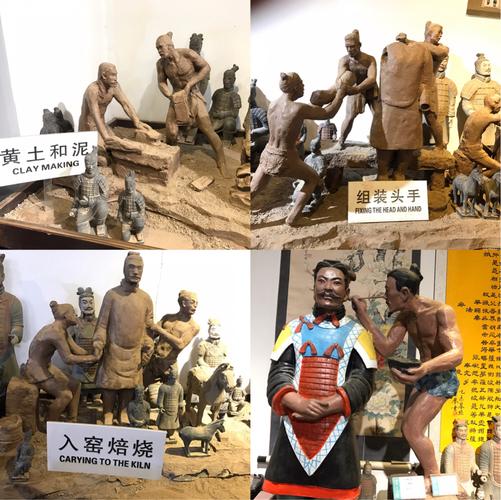
The Untold Story of the Terracotta Army's Creation: A Look at the Labor Force
The Terracotta Army, a mesmerizing spectacle of ancient Chinese artistry, stands as a testament to the might and ambition of Qin Shi Huang, the first emperor of a unified China. Yet, behind the awe-inspiring sight of thousands of life-sized terracotta warriors lies the untold story of the massive labor force that brought this grand vision to life.
The Historical Records of Sima Qian
Our primary source of information about the construction of the Terracotta Army comes from the meticulous records of Sima Qian, a court historian during the subsequent Han Dynasty. In his seminal work, the Records of the Grand Historian, Sima Qian notes that Emperor Qin Shi Huang, obsessed with achieving immortality and maintaining his power in the afterlife, commissioned the construction of his elaborate mausoleum complex shortly after ascending to the throne in 246 B.C.
Sima Qian's writings tell us that a staggering number of laborers - over 700,000 - were conscripted to toil on this colossal project. This workforce, drawn from all corners of the newly unified empire, dedicated years of their lives to sculpting, firing, and arranging the thousands of terracotta figures, along with the construction of the vast mausoleum complex itself.
A Diverse and Skilled Labor Force
The sheer scale and intricacy of the Terracotta Army hint at the diverse skills possessed by the workforce. The laborers would have comprised:
- Skilled Artisans: These individuals were responsible for designing and sculpting the warriors, horses, and chariots. Their keen eye for detail is evident in the unique facial features, hairstyles, and armor of each figure.
- Pottery Experts: The creation of the terracotta figures required immense knowledge of pottery making. These skilled laborers would have been responsible for selecting the clay, molding and firing the figures, and ensuring their durability.
- Laborers and Craftsmen: A vast number of workers would have been needed for tasks such as preparing the clay, transporting materials, building kilns, and assembling the figures within the burial pits.
The Halt of Construction and Its Implications
According to Sima Qian, the construction of the mausoleum, including the creation of the Terracotta Army, came to an abrupt halt in 209 B.C. This stoppage coincided with a series of uprisings that erupted across the Qin Empire a year after the emperor's death. The tumultuous political climate and the need to quell these rebellions likely forced the new leadership to divert resources away from the mausoleum project.
FAQs
How do we know about the number of people who worked on the Terracotta Army?
Our knowledge stems from the writings of Sima Qian, a Han Dynasty historian who documented the event in his Records of the Grand Historian.
What kinds of people were involved in the construction process?
The workforce was remarkably diverse, consisting of skilled artisans, pottery experts, laborers, craftsmen, and likely individuals from various other trades.
Why was the construction of the Terracotta Army halted?
The construction was halted in 209 B.C. due to a series of uprisings that erupted throughout the Qin Empire following the death of Emperor Qin Shi Huang.